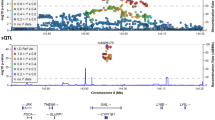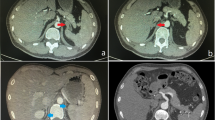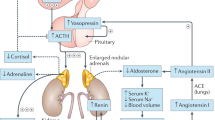Abstract
Congenital adrenal hyperplasia (CAH) is one of the most common autosomal recessive inherited endocrine disease. Steroid 11β-hydroxylase deficiency (11β-OHD) is the second most common form of CAH. The aim of the study was to study the functional consequences of three novel and one previously described CYP11B1 gene mutations (p.(Arg143Trp), p.(Ala306Val), p.(Glu310Lys) and p.(Arg332Gln)) detected in patients suffering from classical and non-classical 11β-OHD. Functional analyses were performed by using a HEK293 cell in vitro expression system comparing wild type (WT) with mutant 11β-hydroxylase activity. Mutant proteins were examined in silico to study their effect on the three-dimensional structure of the protein. Two mutations (p.(Ala306Val) and p.(Glu310Lys)) detected in patients with classical 11β-OHD showed a nearly complete loss of 11β-hydroxylase activity. The mutations p.(Arg143Trp) and p.(Arg332Gln) detected in patients with non-classical 11β-OHD showed a partial functional impairment with approximately 8% and 6% of WT activity, respectively. Functional mutation analysis allows the classification of novel CYP11B1 mutations as causes of classical and non-classical 11β-OHD. The detection of patients with non-classical phenotypes underscores the importance to screen patients with a phenotype comparable to non-classical 21-hydroxylase deficiency for mutations in the CYP11B1 gene in case of a negative analysis of the CYP21A2 gene. As CYP11B1 mutations are most often individual for a family, the in vitro analysis of novel mutations is essential for clinical and genetic counselling.
Similar content being viewed by others
Log in or create a free account to read this content
Gain free access to this article, as well as selected content from this journal and more on nature.com
or
References
New MI : Inborn errors of adrenal steroidogenesis. Mol Cell Endocrinol 2003; 211: 75–83.
Speiser PW, White PC : Congenital adrenal hyperplasia. N Engl J Med 2003; 349: 776–788.
Peter M, Dubuis JM, Sippell WG : Disorders of the aldosterone synthase and steroid 11beta-hydroxylase deficiencies. Horm Res 1999; 51: 211–222.
White PC, Curnow KM, Pascoe L : Disorders of steroid 11 beta-hydroxylase isozymes. Endocr Rev 1994; 15: 421–438.
Joehrer K, Geley S, Strasser-Wozak EM et al: CYP11B1 mutations causing non-classic adrenal hyperplasia due to 11 beta-hydroxylase deficiency. Hum Mol Genet 1997; 6: 1829–1834.
Peters CJ, Nugent T, Perry LA et al: Cosegregation of a novel homozygous CYP11B1 mutation with the phenotype of non-classical congenital adrenal hyperplasia in a consanguineous family. Horm Res 2007; 67: 189–193.
Mornet E, Dupont J, Vitek A, White PC : Characterization of two genes encoding human steroid 11 beta-hydroxylase (P-450(11) beta). J Biol Chem 1989; 264: 20961–20967.
Krone N, Riepe FG, Gotze D et al: Congenital adrenal hyperplasia due to 11-hydroxylase deficiency: functional characterization of two novel point mutations and a three-base pair deletion in the CYP11B1 gene. J Clin Endocrinol Metab 2005; 90: 3724–3730.
Fanelli F, Belluomo I, Di Lallo VD et al: Serum steroid profiling by isotopic dilution-liquid chromatography-mass spectrometry: comparison with current immunoassays and reference intervals in healthy adults. Steroids 2011; 76: 244–253.
Kulle AE, Welzel M, Holterhus PM, Riepe FG : Implementation of a liquid chromatography tandem mass spectrometry assay for eight adrenal C-21 steroids and pediatric reference data. Horm Res Paediatr 2013; 79: 22–31.
Cacciari E, Milani S, Balsamo A et al: Italian cross-sectional growth charts for height, weight and BMI (2 to 20 yr). J Endocrinol Invest 2006; 29: 581–593.
Krone N, Grischuk Y, Muller M et al: Analyzing the functional and structural consequences of two point mutations (P94L and A368D) in the CYP11B1 gene causing congenital adrenal hyperplasia resulting from 11-hydroxylase deficiency. J Clin Endocrinol Metab 2006; 91: 2682–2688.
Kraulis PJ : MOLSCRIPT: a program to produce both detailed and schematic plots of protein structures. J Appl Cryst 1991; 24: 946–950.
Lee HH, Won GS, Chao HT, Lee YJ, Chung BC : Novel missense mutations, GCC [Ala306]->GTC [Val] and ACG [Thr318]->CCG [Pro], in the CYP11B1 gene cause steroid 11beta-hydroxylase deficiency in the Chinese. Clin Endocrinol (Oxf) 2005; 62: 418–422.
Curnow KM, Slutsker L, Vitek J et al: Mutations in the CYP11B1 gene causing congenital adrenal hyperplasia and hypertension cluster in exons 6, 7 and 8. Proc Natl Acad Sci USA 1993; 90: 4552–4556.
Parajes S, Loidi L, Reisch N et al: Functional consequences of seven novel mutations in the CYP11B1 gene: four mutations associated with nonclassic and three mutations causing classic 11{beta}-hydroxylase deficiency. J Clin Endocrinol Metab 2010; 95: 779–788.
Geley S, Kapelari K, Johrer K et al: CYP11B1 mutations causing congenital adrenal hyperplasia due to 11 beta-hydroxylase deficiency. J Clin Endocrinol Metab 1996; 81: 2896–2901.
Kuribayashi I, Nomoto S, Massa G et al: Steroid 11-beta-hydroxylase deficiency caused by compound heterozygosity for a novel mutation, p.G314R, in one CYP11B1 allele, and a chimeric CYP11B2/CYP11B1 in the other allele. Horm Res 2005; 63 (284-293).
Otyepka M, Skopalik J, Anzenbacherova E, Anzenbacher P : What common structural features and variations of mammalian P450s are known to date? Biochim Biophys Acta 2007; 1770: 376–389.
Bridges A, Gruenke L, Chang YT, Vakser IA, Loew G, Waskell L : Identification of the binding site on cytochrome P450 2B4 for cytochrome b5 and cytochrome P450 reductase. J Biol Chem 1998; 273: 17036–17049.
Acknowledgements
We are grateful to Dr Rita Bernhardt for providing the CYP11B1 cDNA, Dr Walter L Miller for providing the Adx and AR cDNA and Dr Hiroshi Takemori for providing the antihuman-CYP11B rabbit antiserum. We appreciate the expert technical assistance of Tanja Stampe. This work was partially supported by the Italian grant PRIN no. 20083ENLWJ.
Author information
Authors and Affiliations
Corresponding author
Ethics declarations
Competing interests
The authors declare no conflict of interest.
Rights and permissions
About this article
Cite this article
Menabò, S., Polat, S., Baldazzi, L. et al. Congenital adrenal hyperplasia due to 11-beta-hydroxylase deficiency: functional consequences of four CYP11B1 mutations. Eur J Hum Genet 22, 610–616 (2014). https://doi.org/10.1038/ejhg.2013.197
Received:
Revised:
Accepted:
Published:
Issue date:
DOI: https://doi.org/10.1038/ejhg.2013.197
Keywords
This article is cited by
-
Pathogenicity of Congenital Adrenal Hyperplasia Induced by the p.P377L Mutation of CYP11B1
Biochemical Genetics (2024)
-
Mass spectrometry: an essential tool to be used in discrimination between causes of congenital adrenal hyperplasia, and its benefits versus radioimmunoassay
Beni-Suef University Journal of Basic and Applied Sciences (2021)
-
Steroid biomarkers for identifying non-classic adrenal hyperplasia due to 21-hydroxylase deficiency in a population of PCOS with suspicious levels of 17OH-progesterone
Journal of Endocrinological Investigation (2020)
-
Non-classical 11β-hydroxylase deficiency caused by compound heterozygous mutations: a case study and literature review
Journal of Ovarian Research (2018)
-
Clinical perspectives in congenital adrenal hyperplasia due to 11β-hydroxylase deficiency
Endocrine (2017)



